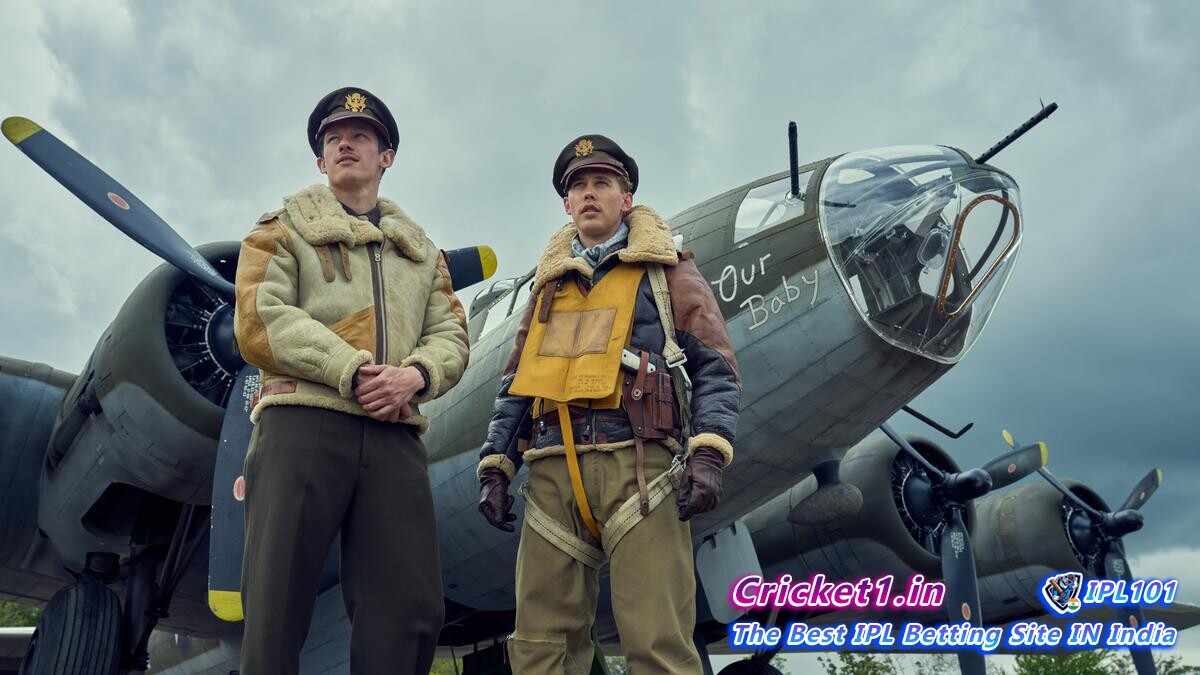
As viewers immerse themselves into the expansive realm of “Masters of the Air,” the Apple TV+ nine-episode World War II epic, one word encapsulates the essence of this colossal narrative: tenacity. This quality, both admirable and rare, becomes the underpinning theme as we delve into the oft-unspoken trials of airmen during one of history’s darkest times. The saga foregrounds not just the bravery, human spirit, and the abhorrence of war, but also the skilled craftsmanship in its portrayal.
This series is inching toward acclaim as a modern-day masterwork, unfolding the story of the 100th Bomb Group of the United States Eighth Air Force in 1943. As pilots brave the skies over Nazi Germany, they confront the perilous task of bombing strategic targets whilst enduring the onslaught of flak anti-aircraft fire and threatening engagements with Nazi fighters piloting Messerschmitt Bf 109s.
A pervasive sense of dread looms over the series, with every moment holding the potential for disaster. The gruesome visuals of bloodied bodies and shattered B17 bombers overwhelm, invoking parallels to the haunting Omaha Beach sequence of “Saving Private Ryan.” This heart-rending connection underscores the continuity of vision for this series crafted by Steven Spielberg, Tom Hanks, and Gary Goetzman, after their earlier war-themed works, “Band of Brothers” and “The Pacific.”
“Masters of the Air” offers a unique character-driven journey, with lead actors delivering powerful performances. Characters weave in and out of the narrative based on their destiny, with the focus remaining on the collective experiences of these men rather than individual heroics. At the heart lies the camaraderie and conflict between pilots Gale ‘Buck’ Cleven and John ‘Bucky’ Egan, portrayed by Austin Butler and Callum Turner, respectively.
The series deftly conveys the relentless pressures of war, with poignant subplots such as the journey of Lt. Harry Crosby, portrayed by Anthony Boyle, whose progression mirrors the deep psychological scars inflicted by the conflict. Such nuanced character arcs are contrasted with moments of levity, representing the soldiers’ transient escapes from their grim reality, a testament to their unwavering mental resilience.
Tensions rise further when the story shifts to those captured in enemy territory, bringing the audience closer to the unimaginable pressures faced by soldiers. However, certain narrative choices veer somewhat into an overemphasis on American valor at the expense of a more nuanced interpretation of the era’s complex dynamics, skewing the narrative and downplaying the harrowing impact of the Holocaust.
A glaring undertone of the series involves the wartime segregation and racism faced by The Tuskegee Airmen. While their presence within the story is notable, the portrayal of characters like 2nd Lt. Alexander Jefferson, 2nd Lt. Richard D. Macon, and 2nd Lt. Robert H. Daniels could have been more substantial in addressing the systemic racism experienced by these Black soldiers.
Despite these points of contention, what endures is the vast, unflinching depiction of war and the exceptional technical execution that the series takes pride in boasting. With a budget rumored to exceed $250 million, “Masters of the Air” stands as one of the most ambitious and meticulously crafted American television endeavors of the year.
The inaugural three episodes of “Masters of the Air” have premiered on Apple TV+, with subsequent episodes scheduled for weekly releases every Friday. This ambitious project not only captures the somber realities of war but also the enduring ability of human beings to persist through adversity, summarized in the gripping display of tenacity that defines the series.

